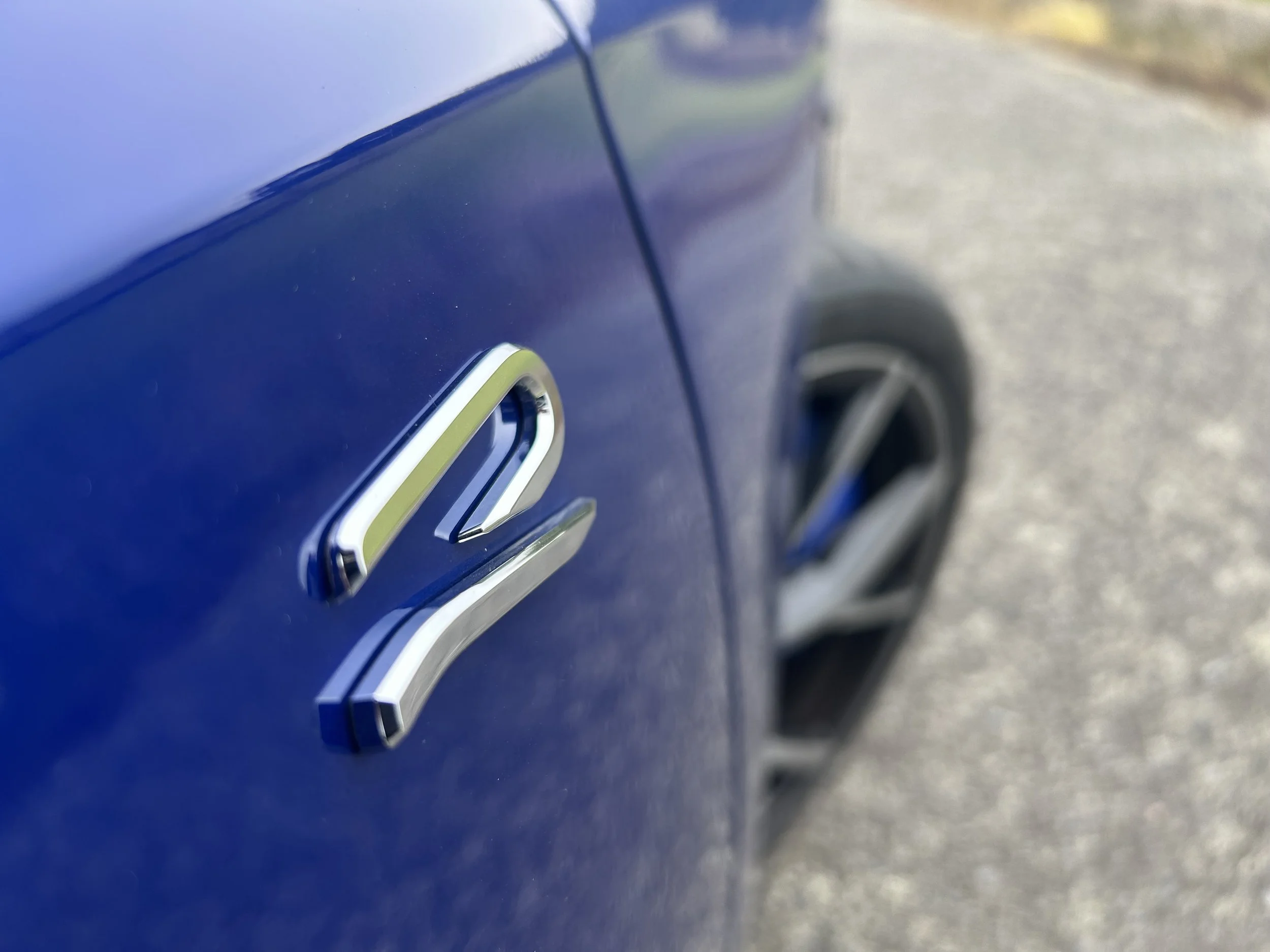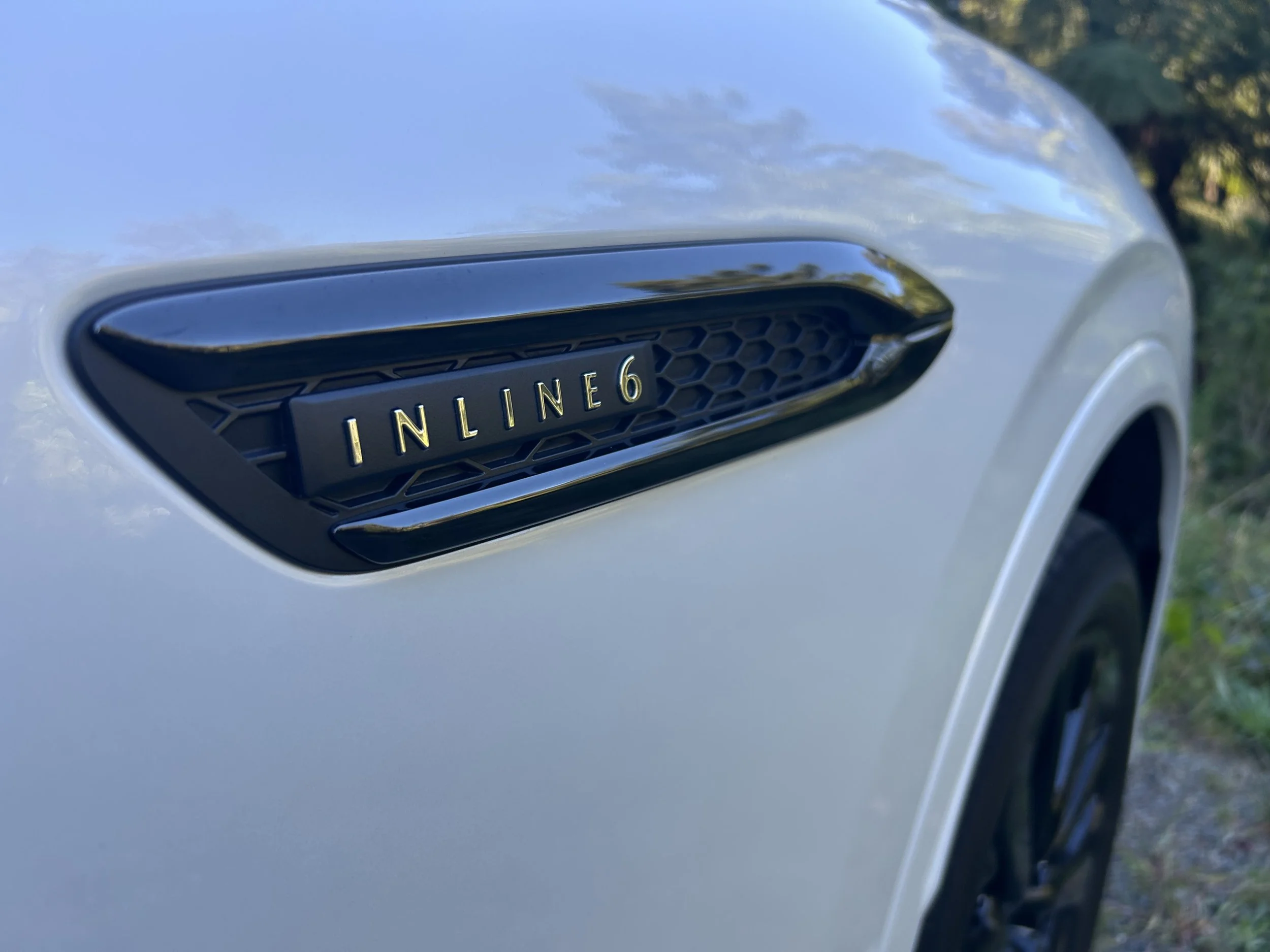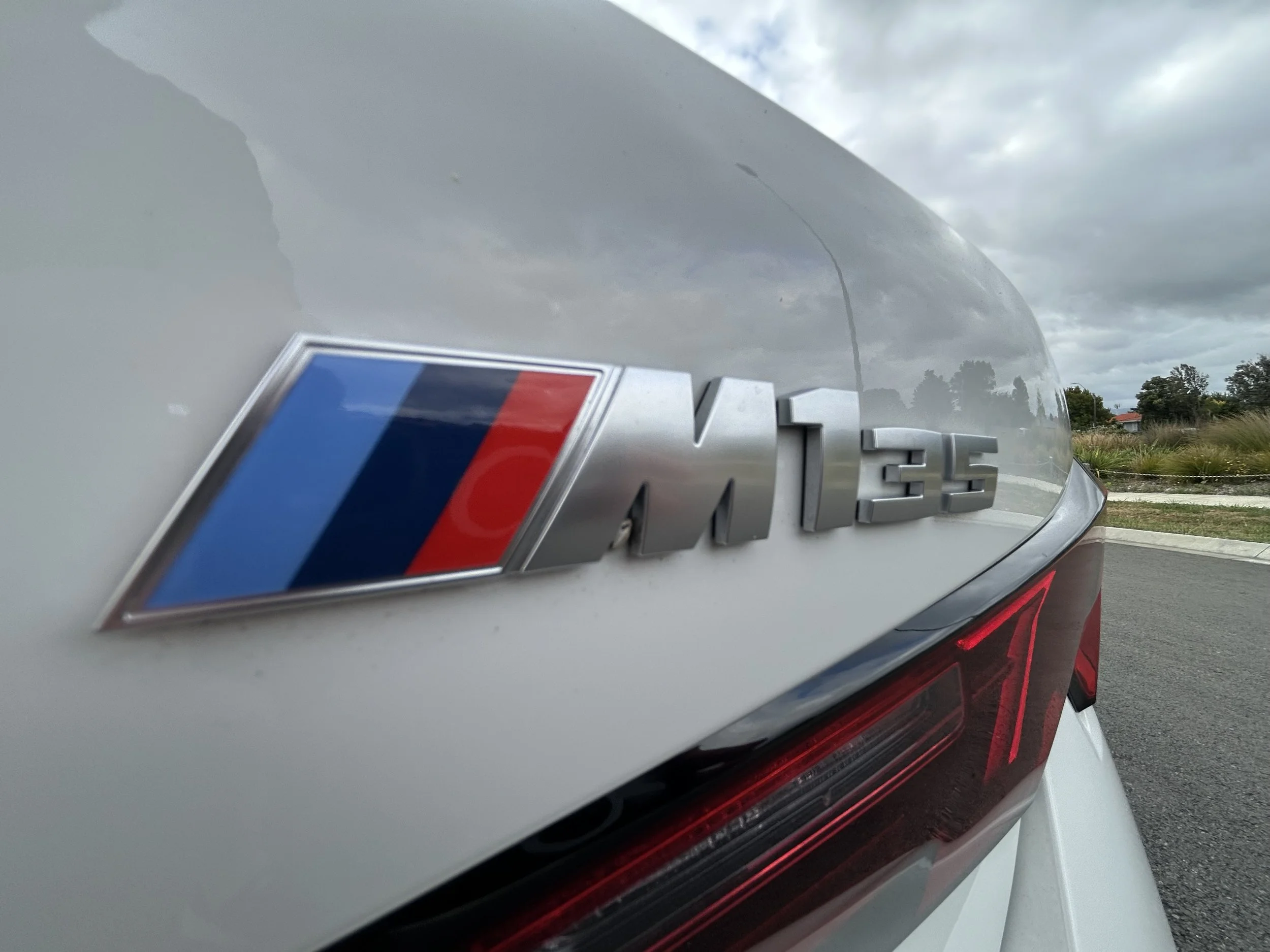Opel Mokka SRi petrol / Mokka-E electric road test review: Tastier French dressing
/Boldness in design is matched by genuine driving flair; it’s the right car to put Opel in the spotlight.
Price (before rebate): $44,990 / $69,990
Powertrain and economy: 1.2-litre turbocharged 3-cylinder petrol, 96kW/230Nm, FWD, claimed combined economy 5.7L/100km; Mokka-e, single electric motor, 100kW/260Nm, 50kWh battery, FWD, 6.2km/kWh.
Vital statistics: 4151mm long, 1791mm wide, 1531mm high, luggage capacity 350/310 litres.
Safety: 4 stars NCAP
We like: Flairful design, great front seats, Mokka-e’s planted feel, petrol’s zip, strong spec.
We don't like: Weird boot latch, petrol rough at idle.
NO hope of being anonymous in this car – and that’s exactly the outcome Opel intends.
The Mokka is all about being a head-turning, comment magnet. Is it divisive? They hope so. All they ask of those who give consideration is agreement on two points: That has attitude. That there’s nothing else quite like it in its category.
Which is? Well, there are two, really. At top-spec SRi level it’s a matter of selecting your compact crossover chic with or without battery.
The Mokka-e that’s front and centre in Opel's electric ambition is the predominantly white car seen here, with a 100kW/260Nm single motor powertrain, fed by a 50kWh battery. It’s the future that attunes best, due to range being realistically limited to under 300kms before need to replenish, to a regime that asks primarily for urban operation and reasonably short duration open road use.
The alternate Mokka, is all but indistinguishable in exterior look yet is more adventurous in operability. Because of what’s under the bonnet.
It comes out with a 1.2-litre three-cylinder engine, making 96kW/230Nm and fed by the stuff the world is facing up to having to wean off. Petrol. That car – the back one on today’s photos – is just as handy around city streets, but is far better suited to long open road driving, simply because it has at least twice the EV’s range.
Dynamic differences come into this as well. The Mokka in either guise is a truly impressive car; it’s involving and entertaining. There’s small car nippiness, but it has the sense of a larger car’s solidity. It feels well sorted for our roads. The battery-fed drivetrain is snappier in step-off, but the petrol is the stronger overall accomplice. The electric’s weight ultimately dampens overall performance and cornering feel, but on the other hand it has a more settled ride. Yet both are agreeably modern in their operability.
The electric is more premium simply because, well, batteries and the commensurate technology they fed is more expensive. The Clean Car rebate, takes the sticker back to just over $60k, but even then the buy-in is more about principle than money saving. Mokka is one of quite a few in that situation. Speaking of the Government’s incentive, the petrol Mokka also lines up for a payout, on grounds of its light emissions. You can claim $1923.23.
Putting all that aside, there is no bolder car here in Opel’s family; none that quite so stridently announces that this famous brand is back, under new ownership, with new aspiration.
Speaking a new language? Yes, and not just by way of its assertive Vizor styling theme – which becomes rather self-explanatory when you consider the sharp overhang front end.
Opel is German, but we’ve always known it as part of the General Motors family. But GM, remember, fire-saled its European assets almost 10 years ago. The French got Opel for a bargain and, within two years into ownership, had turned a massive loss-maker into a profit centre.
While keeping the GM-era model names, they also changed the cars themselves, plonking all but one (the incoming Grandland) onto their own platforms, running their own drivetrains and other tech.
The Common Modular Platform (or CMP) underpinning Mokka was PSA-spawned and is now Stellantis Group-shared. As well as being the basis for the smaller Corsa city hatch, it also underpins the Peugeot 208 and, in the extended format, the 2008. Pub quiz fact: The Mokka is off an assembly line in Poissy, France.
So there’s same … but also different. Not least in price. Opel and Peugeot (and Citroen) product represent via a common distributor here, but have separate managements with their own market strategies.
Opel intention to get Kiwis to reconsider a badge they last saw almost 30 years ago, but whose products they knew quite well via Holden (yes, all very complicated), right up to when the ZB Commodore left the scene demonstrates in its cars having clear price advantage over the Peugeot equivalents.
Would you even know they were related? Delivering into French hands clearly awakened Opel’s design department; it had knocked out some reasonably far cars prior – I think the ZB is a decent design – but the Vizor look that Mokka has debuted and is also on the impending Astra, and will hit the Corsa later this year, is something else again.
Spawned from the firm’s first concept, the GT X Experimental car, delivered since the pay cheques started coming from Paris, Vizor is clearly most bold around the front, but influences every angle. Of which there are quite a few, and not just on the outside.
It also dictates the interior design – getting to that in a minute - and, even, why the Mokka colour palette includes some rather banging hues; including a very vivid green that would look quite wrong on many cars but suits this one really well. It’s also why Mokkas have a blood-red swoosh from the A-pillar to the rear, running parallel with the roofline. This highlighting also replicates inside, on the dash. That’s an option, but why wouldn’t you?
If you’re conservative in your tastes, it might seem a touch too wild. But Opel’s intent is to woo younger buyers; I think this is exactly the way to do that.
There are other implications to the styling. Photos don’t lend accurate impression of its physical size; it’s actually more compact than it appears. In images, though, there’s an undeniable ‘bigness’. An 18-inch rim is large but not extreme these days, yet it expresses in XXL on the Mokka, and nicely so.
There are a number of cars out there in the battery pure quarter that clearly are derivations of petrol models. The Mokka follows that prescription, yet it’s the only one I’ve met that everyone immediately assumed was electric, then was surprised to discover it also comes out in petrol. It is simply because they see Opel’s lightning bolt badge and make an assumption? If so, it’s a huge red herring … the badge dates back to the 1960s and was inspired by a famous truck, the Blitz (German for ‘lightning’).
Mokka’s interior is fantastic in look, more orthodox than the Peugeot cars’ in feel. It works for me. The ‘low and small steering wheel in your lap’ approach Peugeot now pins hopes on is eschewed in Opel product. This allows Mokka to have a driving position better-suited to a taller and, erm, stockier driver.
The cabin cannot be accused of being plain or dowdy. It looks neat, stylish and feels very well made; in respect to quality of plastics and presentation, you’d think Opel looked less at the mainstream models they price match than more expensive fare from BMW, Audi and Mercedes Benz.
For overall interior space, it’s a little bit better than the Peugeot donor, but not enough to escape also being called cosy. Knee space in the second row will be an issue for adults unless those up front are prepared to bring their chairs forward.
If it’s going to act as a car in which one or just two occupants will spend their time, then the limited space behind the front row will hardly be a concern. And those up front certainly do well for comfort, with some very nice seats, approved by Germany’s bad back association.
The boot is also a little truncated, with the need to package the battery pack cutting it to 310 litres, compared to a petrol Mokka's 350 litres, and the release button is quirkily-located – there’s an indent for your hand that everyone first goes to, but that’s just a pull-up. The actual release is a button inset into the bumper, above the number plate.
The big feature in Mokka is the ‘pure panel’, a pair of conjoined screens, with the 10 inch infotainment screen in the middle and a big 12-inch screen in front of the driver for the instruments.
These are surrounded by gloss (aka piano) black plastic, the idea of that configuration being that it lends a smoother fit into the rest of the cabin architecture. It looks smart, but if you’re not one to abide fingerprint marks, best you carry a small wipe cloth.
Some makers use digital displays as an excuse to relay oodles of information, more than you might ever need. Opel’s instrument screen is quite sparsely populated and perhaps a touch oversimplified.
It relays a rev counter at an oddly small scale and doesn’t provision a classic, analogue-style speedometer in any of its display modes. The EV car has more to share, mainly about the state of the battery’s condition and the impact your driving style is having on it, but over-all it’s also throttling back on the information flow, compared to some.
The specification is intriguing. The semiconductor shortage likely explains why the induction recharging pad doesn’t action at the moment, but as it still has to tether for Apple CarPlay (or Android Auto) operability, your phone is going to recharge anyway. It has a bangingly decent sound system, too.
SRi also carries some features more commonly associated with premium cars, such as LED Matrix headlights with a nicely attuned auto dimming and full beam, heated steering wheel and front seats, and proximity keyless entry and exit. It has an electric parking brake and traffic sign recognition, a 180-degree panorama rear-view camera, navigation, advanced cruise control and an (over) active lane positioning.
Even though the petrol is the more alert car, the electric doesn’t make a … erm … mockery … of the chassis engineers’ talents. In spite of having a wheelbase that, at 2557mm, is only fractionally longer than that of the Corsa-e, which was driven subsequently, it does seem a more settled car, not least in corners. In either derivative, too, you’ll love the sweetness of the steering; Mokka’s wheel is much larger than in the Peugeot product, but offers a more natural feel.
The electric’s ride quality is slightly firm but nicely damped; the petrol feels a bit joltier, and there’s some suspension noise, too. Braking-wise, the petrol is better; with the EV there's not much of a 'one-pedal' regenerative braking feel and it needs more room to stop.
The electric is an easy and likeable accomplice around town and, while you do need to keep a weather eye on the consumption as the range definitely melts away more noticeably at 100kmh, it is smooth-as at open road pace. You can switch from Eco to Normal to Sport modes, but they don't make a huge difference. It’s not a power-packed involvement – the 0-100kmh time of 9.2 seconds points to it being calibrated for linear rather than silly acceleration. The 1.2 and its 8-speed auto is quicker, overall. The petrol drivetrain is surprisingly potent, given its capacity and cylinder count, but is also noisier. Conversations that can take place at normal tone in the electric are likely to be more forced in the petrol due the additional mechanical noise, with it also delivering additional road roar as well. The engine is ours had periods when it fell into a rough idle.
Compact and medium crossovers and sports utilities are massively popular but regardless of the wide spead of choice, there seems no harm in adding another, not least when it’s of the quality the Opel delivers.
The brand’s intent to be considered a wholly electric choice long term is admirable; the Mokka-e isn’t quite at the point where it could be called an all-rounder.
A colleague in a subsequent usage drove this very car from Wellington to Cambridge and return and the requirement for replenishment was both frequent yet also close-run … he told me he made it to one vital recharger with just one percent battery life left. There also seemed to be issues with hyperchargers. For me, I’d simply kept the car topped up with short duration home charging. Peugeot has since updated the battery for 208/2008 and I daresay those improvements will also transfer to the Opel.
This is a period where additional brands are cropping up; it’s great to see Opel not only back on this turf but with product that brims with flair. The Mokka’s sheer chutzpah holds it in good stead.

























